Mallory Baches
Urban Designer and Civic Specialist
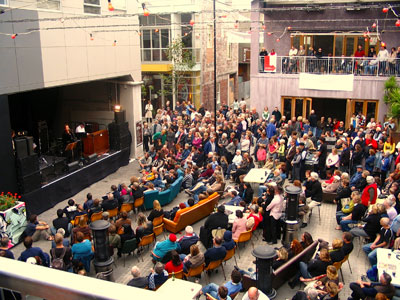
SOL Square, an urban redevelopment in the historic city centre of Christchurch, New Zealand. The design utilized a simple cross-through strategic demolition with new construction, consisting of four access routes converging on a central court within a city block. The master plan of SOL Square activates the existing rear alley by these proposed new passages, flanking the pedestrian-only spaces with ground floor retail and offering office and residential opportunities on upper floors. Following the devastating 2011 Christchurch earthquake, SOL Square has been closed until further notice.
Primary design concentration:
Urban Design
Most preferred tools for designing:
I always start a project with my Paper Mate Flair pen and Moleskine-squared notebook. Sketching is like that morning jolt of caffeine for my design process.
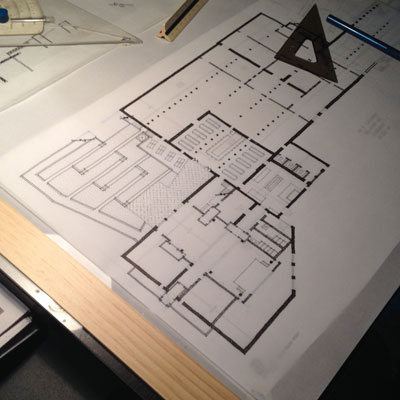
Currently on the drawing boards: Chronicle Mill, a redevelopment concept design for the former textile mill in downtown Belmont, just outside Charlotte, North Carolina. The design imagines reinvestment in this historic economic driver for the small town through redevelopment of the 100+ year-old structure into a series of commercial and civic uses: office space, a brewery, a winery, a cafe, a hotel, a meeting hall and event space, and an outdoor amphitheater.
How and why did you choose to become a designer?
Most designers would probably say that, in some ways, they were “always” a designer, but I made the conscious choice while sitting in the “Analysis of Architectural Writings,” at the time taught by the unparalleled Thomas Gordon Smith, during my freshman year of college. I spent my first semester in the Engineering school at Notre Dame. I struggled both academically and emotionally with the courses and the content, so I made the decision to switch over to the Architecture School in hopes that I could find studies that I loved and believed in. And gosh, did I ever.
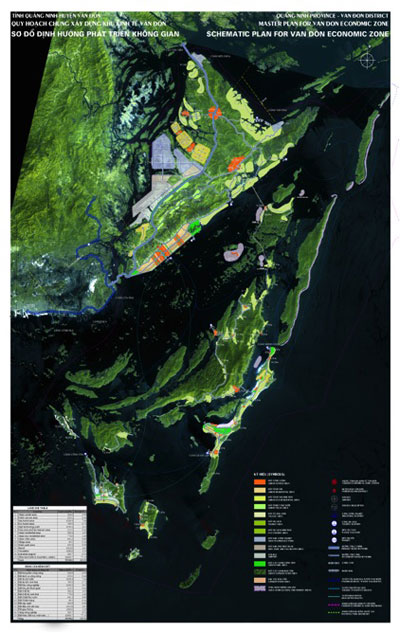
Van Don Economic Development Zone, an infrastructure masterplan in the Quang Ninh Province on Ha Long Bay, Vietnam. The design explores the environmental, social, cultural, and economic needs of 550km² of the working islands adjacent to the Ha Long Bay UNESCO World Heritage Site, proposing conceptual design responses to the growing population and investment in the highly sought-after coastal area.
What are some of the challenges you encounter as a designer and how do you deal with them?
One of the biggest challenges I have faced is an unwillingness to learn. Design is fundamentally about learning: for the designer, learning everything about a problem or circumstance in order to find a response, and for the user, learning how to experience something in a more useful or pleasing way. Without fail, every design meets those who are unwilling to learn, and it is the sort of response that sucks oxygen from the process and lessens it, sometimes slightly and sometimes greatly, from an unappreciative user to an uncompromising collaborator. I try to remember that everyone learns differently, as Howard Gardner’s multiple intelligences describe. I try to find a language that the unwilling learner will respond to, remembering that sometimes I’m the one who needs to learn from a failure.
What is your definition of an “elegant solution,” that is, good design?
I love that phrase, and use it as my highest level of design praise! The architect Pier Carlo Bontempi has said, “Tradition is innovation that continues to succeed,” and I think that sums up an elegant solution perfectly: innovation that continues to succeed.
From skills to values, what makes a designer successful?
Curiosity. Exploration is the lifeblood of creativity, and I can’t think of a single successful designer I know who isn’t insatiably curious: about their work, about the work of others, about life experiences, about personal stories, about topics as random as stamp collecting or 17th century Dutch masters or “Star Wars” trivia or whatever else strikes their fancy.
How do you stay motivated and grow personally and professionally as a designer?
Listening to others talk about their work helps me refocus and reevaluate my own. Every designer has their own personal process, but I find that witnessing others walk through theirs helps me see the strengths and weaknesses of my own. Design is the sort of practice that can become methodical, without the occasional nudge of influence. I’m not ashamed to say that my work is a product of all of the great design I’ve experienced in my lifetime, and if I’m going to continue to improve, how else than by experiencing more great design?
For those aspiring to become a designer, whatever the discipline, what is your advice?
My advice to beginning designers is to be aware that design is about both the immediate as well as the lifespan. When I began practicing more than fifteen years ago, I was focused on perfecting those elements I could control in order to design a perfect moment in the immediate here and now. With some years on my career, I’ve found that some of the work I’m most proud of is the work that has the richest patina, adapting with time and the layered impact of use. I’ve even lost work (an infill project that was destroyed by the 2011 Christchurch earthquake), and there is something deeply sad but poetic about that—a reflection that our work is part of such a broader timeline of design.
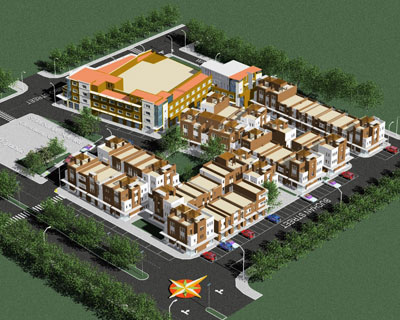
Sydenham Square, an urban infill master plan just outside the historic city centre of Christchurch, New Zealand. The design incorporates the character of the surrounding neighborhood while developing a distinct architectural language reflecting the high density urban condition of the planning, which calls for mixed use townhouses lining a series of multi-use thoroughfares and civic spaces.
What is your quest in design, from a professional practice, education or evolution standpoint?
My quest in design is to help make more of the kinds of places that I have loved the most, from the scale of the room, all the way to the scale of the entire city. Maybe even beyond.
Previous: Hannah Ellen Spencer | Next: Bushra Mahmood
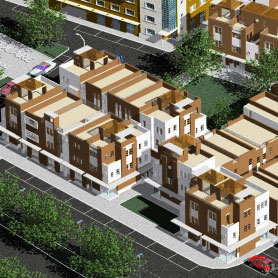
Support this solo initiative
What began as a collection of links has evolved into a comprehensive archive committed to creative culture—offering so far 395 interviews with under-the-radar Artists, Designers & Makers, in addition to 202 write-ups across events, books, movies, more. Free to explore. Free from ads. If you gain a level of motivation, knowledge, even delight, from Design Feast, please support on Patreon. Thanks for your consideration!
Wishing you continual success,
Nate Burgos, Content Creator & Publisher
Comments
There are no comments yet.
Leave Your Comment